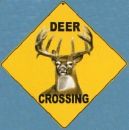Do you have a favorite backseat driver, or maybe passenger seat driver, that helps you while you are driving down the road? Do you consider them a pest or a tool like your electronic navigation system? You know, up there on the dash, giving you directions and telling you where to turn (or go)?
Every situation is different, but more often, a backseat driver is considered as giving unneeded and unwanted advise to the driver. Maybe a spouse or a friend that might comment on the speed at which one is driving or the route you are taking, or just makes little moans and shrieks about oncoming traffic.
Some backseat drivers exhibit this type of behavior simply because they feel unsafe or out of control since they are not driving the vehicle and therefore are nervous and jumpy and overly eager to give suggestions and criticism about the driver’s actions.
On the other hand in today’s fast paced, run here and there, get it done society, is it really a bad idea to have a second set of eyes watching the traffic around you? Maybe these individuals are not backseat drivers, but instead, co-drivers. Could we possibly be better off having a co-driver to assist and improve our safe driving capabilities?
I am sure that my wife sometimes perceives that I am annoyed by the driving instructions that she administers to me while we are on the road together, but many times she makes timely observations about things that she sees before I do. Where many times I may see the same hazard that she does, sometimes I may get distracted while driving and she acts as an extra set of eyes on the road, helping to avoid a SUV pulling out of a driveway or a truck speeding through a yellow light at an intersection.
Don’t get me wrong I consider myself a good driver, don’t we all, and as a good driver wouldn’t it be prudent to listen to others around me that have my best interest in mind. Not to mention, the precious cargo I may be carrying if my family members or friends are in the vehicle depending on me to get them somewhere safely and without incident. I take that responsibility very seriously.
Maybe it’s simply a change in attitude. I welcome co-drivers, their eyes and there advice aboard my vehicle. Of course, sometimes I may listen and not take the advice, but listen, because we are all in this together.
Does that make sense? Aren’t we better off with more eyes on the road?
Down The Road – Mike

Precious Cargo

Sometimes the cargo can distract you


